Want to forge a hero’s unforgettable quest? From age-old myths that echo through the centuries, to memorable modern tales, the Hero’s Journey plot structure has shaped many of our most iconic and cherished stories.
If you dream of adding your epic adventure to the classic stories that draw on this pattern, read on to see how the Hero’s Journey Plot Structure Template in Plottr will help you.
What is the Hero’s Journey Plot Structure?
The Hero’s Journey traces the evolution of a protagonist as they navigate through a series of obstacles and challenges — because heroes are made, not born.
It’s based on the work of Joseph Campbell, a professor in comparative mythology and religion who studied myths and storytelling traditions across cultures.
Campbell identified a recurring pattern in these stories, which he called the “monomyth” or the Hero’s Journey.
Who is the Hero’s Journey Plot Template for?
The Hero’s Journey is beneficial for both pantsers (those who write by the seat of their pants) and plotters (those who prefer to craft detailed outlines ahead of writing).
For pantsers, the Hero’s Journey Plot Template provides a loose framework that can serve as a guiding structure during the drafting process. It offers key milestones and stages that can help you maintain a sense of direction and ensure the story has a satisfying narrative arc.
For plotters, this plot structure provides a comprehensive roadmap for story development. Plotters can use it to plan and organize the story meticulously, ensuring all elements of the hero’s transformation are consistent..
Authors in specific genres who find the Hero’s Journey helpful include writers of:
- Fantasy: The Hero’s Journey aligns well with the epic fantasy genre, where heroes embark on grand quests and undergo profound transformations
- Young Adult: The Hero’s Journey resonates with coming-of-age stories, making it a valuable tool for writers who focus on young adult fiction
- Screenwriters: The Hero’s Journey has shaped the world of film, making it highly relevant for screenwriters who aim to create engaging and immersive narratives
Plot Points in the Hero’s Journey Plot Structure Template
Let’s take a closer look at each component of this template in Plottr.
To illustrate each stage of the plot structure, we turn to the movie Star Wars: A New Hope. The story of Luke Skywalker, a farm boy turned galactic hero, serves as a perfect example of the Hero’s Journey in action.
As we dissect the different stages, we’ll take a close look at the trials, growth, and ultimate transformation that define the Hero’s Journey.
For the template in Plottr, we’ve grouped the Hero’s Journey into three phases:
- Departure (Act 1)
- Initiation (Act 2)
- Return (Act 3)
Combined, the phases include 12 objectives and situations the hero must navigate, including the Ordinary World, Call to Adventure, Refusal of the Call, Meeting the Mentor, Crossing the Threshold, Tests, Allies, Enemies, The Ordeal, The Reward, The Road Back, Resurrection, and Return with the Elixir.
The Ordinary World (Beginning of Act 1)
To begin your story, introduce the reader to the hero and their normal, everyday life, while also establishing a problem or question the hero must solve.
Example: Luke Skywalker, a young farm boy on Tatooine, dreams of adventure and becoming a pilot. He feels a sense of restlessness and yearns for something more. However, he is bound by his responsibilities on the farm and his uncle’s expectations, leaving him unsatisfied with his ordinary life.
The Call to Adventure (Middle of Act 1)
Present an incident that disrupts the hero’s ordinary life and compels them to embark on their journey.
Example: When Luke discovers a message from Princess Leia pleading for help, it sets in motion a chain of events that disrupts his ordinary life. The call to adventure comes in the form of a mission to deliver the Death Star plans to the Rebel Alliance, igniting Luke’s desire for adventure and setting him on a path to join the Rebellion.
Refusal of the Call (Middle of Act 1)
Depict the hero’s hesitation or refusal to accept the call initially, for personal or circumstantial reasons. Of course, this resistance is eventually overcome — allowing the adventure to begin.
Example: Initially, Luke is hesitant to leave Tatooine and join the Rebellion. He feels a duty to stay and help his aunt and uncle on the farm. However, the tragic fate that befalls them at the hands of Imperial Stormtroopers pushes him to overcome his reluctance and accept the call.
Meeting the Mentor (End of Act 1)
Introduce the mentor figure who provides guidance, tools, and support to the hero.
Example: Luke encounters Obi-Wan Kenobi, an experienced Jedi Knight and the former apprentice of Luke’s father. Obi-Wan becomes Luke’s mentor, teaching him about the Force and the ways of the Jedi. Through their interactions, Obi-Wan imparts wisdom and guidance to Luke, preparing him for the challenges ahead.
Crossing the First Threshold (Beginning of Act 2)
The hero commits to the adventure and leaves their ordinary world behind, venturing into the unknown.
Example: Luke leaves Tatooine with Obi-Wan, embarking on a journey to deliver the Death Star plans to the Rebel Alliance. By leaving behind his familiar life on the farm, Luke crosses the threshold into an unfamiliar world, embracing the challenges and dangers that lie ahead.
Tests, Allies, and Enemies (Middle of Act 2)
The hero faces challenges, encounters allies, and faces enemies in the unknown world.
Example: Throughout his journey, Luke faces various tests, both physical and spiritual. He hones his lightsaber skills and trains with Obi-Wan, learning to trust in the Force. Along the way, he encounters allies like Han Solo and Chewbacca, who join him in the fight against the Empire. However, he also encounters enemies like Darth Vader and the Imperial forces, who pose significant threats to the Rebel cause.
The Ordeal (Middle of Act 2)
At this central point in the story, your hero should face their most significant test and experience a moment of death and rebirth.
Example: Luke takes part in the Battle of Yavin, a crucial confrontation against the Empire. In this climactic moment, he must rely on his training and the Force to destroy the Death Star. The battle pushes him to his limits, and he experiences a moment of “death” as he confronts Darth Vader and makes a harrowing trench run to deliver the fatal blow. This ordeal represents a transformative experience for Luke, pushing him to face his fears and emerge stronger than before.
The Reward (Seizing the Sword) (End of Act 2)
The hero receives a prized reward, which will ultimately play a key role in their success against the antagonist in your story.
Example: Luke successfully destroys the Death Star, saving the Rebel base from imminent destruction. His heroic actions earn him recognition and respect, solidifying his role as a hero and a key figure in the Rebel Alliance. This victory serves as the reward for his journey, showcasing the growth and transformation he has undergone.
The Road Back (Beginning of Act 3)
Next, the hero aims to return to their ordinary world, but faces new and evolving dangers and challenges that prevent it.
Example: Even though he destroyed the Death Star, Luke knows that the fight against the Empire is far from over. He must navigate the road back to the Rebel base, facing dangers and challenges along the way. The Empire continues to pose a threat, and Luke must regroup with his allies, plan their next moves, and prepare for future confrontations.
Resurrection (Middle of Act 3)
As you reach the climax of your story, the hero now faces the final and most dangerous encounter, leading to their transformation and victory.
Example: In the subsequent movies of the Star Wars saga, Luke faces trials and battles with the dark side, and undergoes personal transformations. His ultimate resurrection comes when he confronts Darth Vader and the Emperor in Return of the Jedi, making a profound choice that saves both him and his father, Anakin Skywalker. This moment solidifies his transformation into a fully realized Jedi and a symbol of hope.
Return with the Elixir (End of Act 3)
The hero returns home, a changed person, bringing the elixir with them — the ultimate prize for achieving their mission, whether it’s a physical object or new wisdom obtained along the way.
Example: His ongoing commitment to the fight against the Empire and his role as a Jedi marks Luke’s journey throughout the Star Wars saga. He returns to his home with newfound wisdom, strength, and an understanding of the Force. As he continues his adventures, he becomes a symbol of hope and inspiration, leaving a lasting impact on the Star Wars universe.
Using the Hero’s Journey Template as Part of a Series
There’s room in the Plottr template to make notes on how the next installment in your story will play out. Here, you should:
- Leave loose threads and room for further character development
- Set up hooks for the next installment, leaving unfinished storylines or teasing future adventures
Example: There are many unresolved storylines established in Star Wars: A New Hope that continue in The Empire Strikes Back, such as Darth Vader’s pursuit of Luke, Luke’s ongoing Jedi training, Hans Solo’s debt to Jabba the Hutt, Leia’s connection to the Force, and the ongoing battle between the Rebel Alliance and the Galactic Empire.
How to Use the Hero’s Journey Plot Structure Template in Plottr
In Plottr, plot templates provide some structure while allowing you to imbue your story with unique elements, surprises, and transformations in each act.
To get started, you’ll need to subscribe to Plottr or sign up for a free trial. Once you’re ready, follow these steps to begin using the Hero’s Journey structure for your next story.
- Step 1: From the Plottr Dashboard, select Create from Template
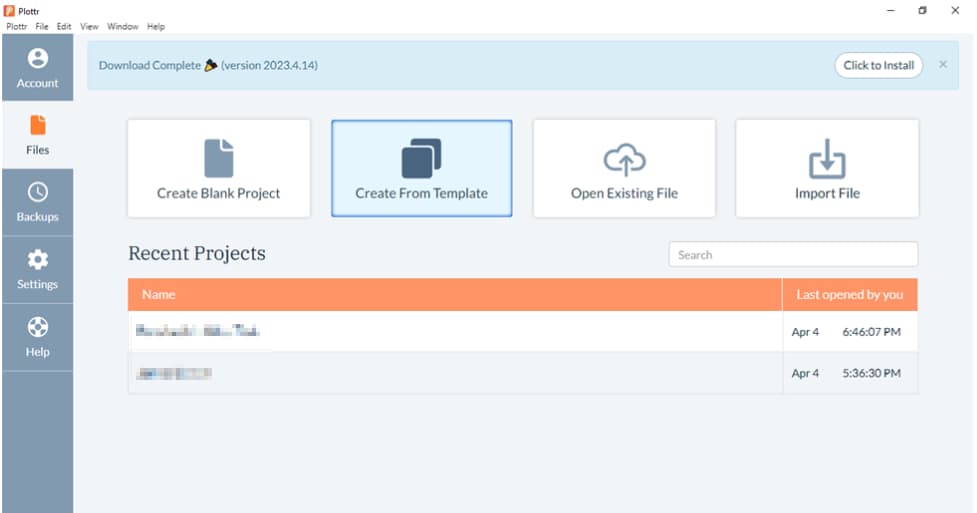
- Step 2: Select the Hero’s Journey template from the list of option in the sidebar, then click Create New Project
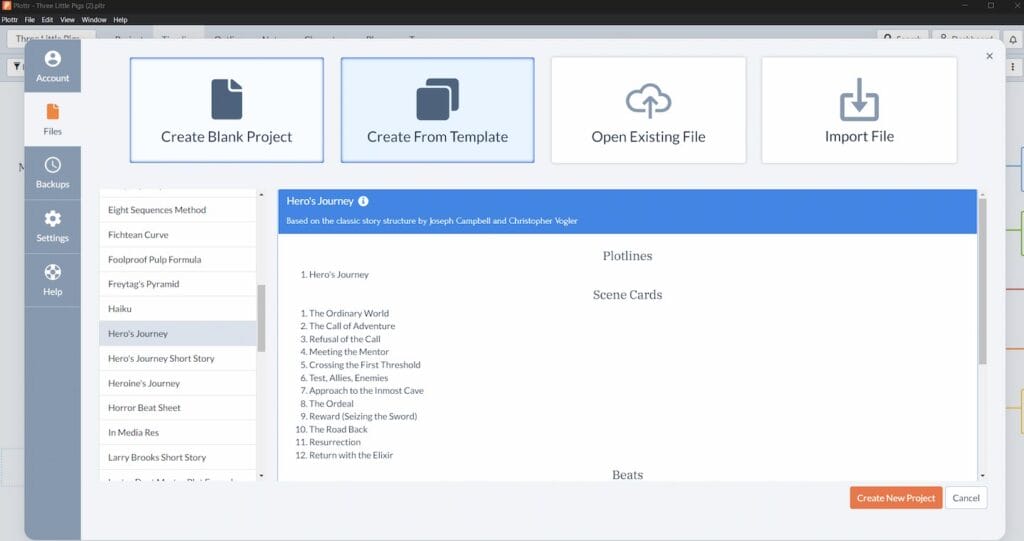
- Step 3: Give your project a name and save it so you can access it anytime, then the template will open in timeline view
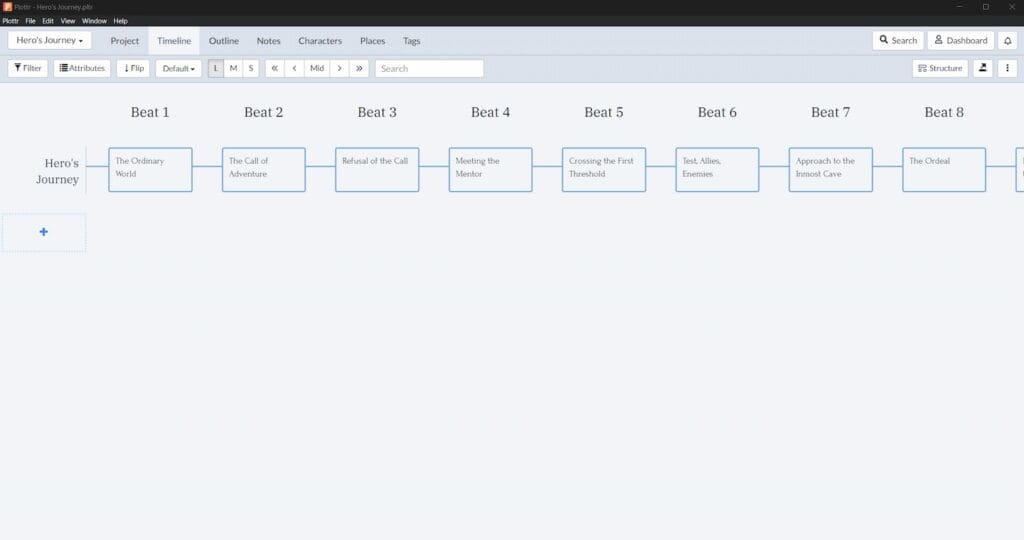
- Step 4: Click on any of the beats’ scene cards to start adding your ideas (you can keep or write over the guidelines in each beat’s card)
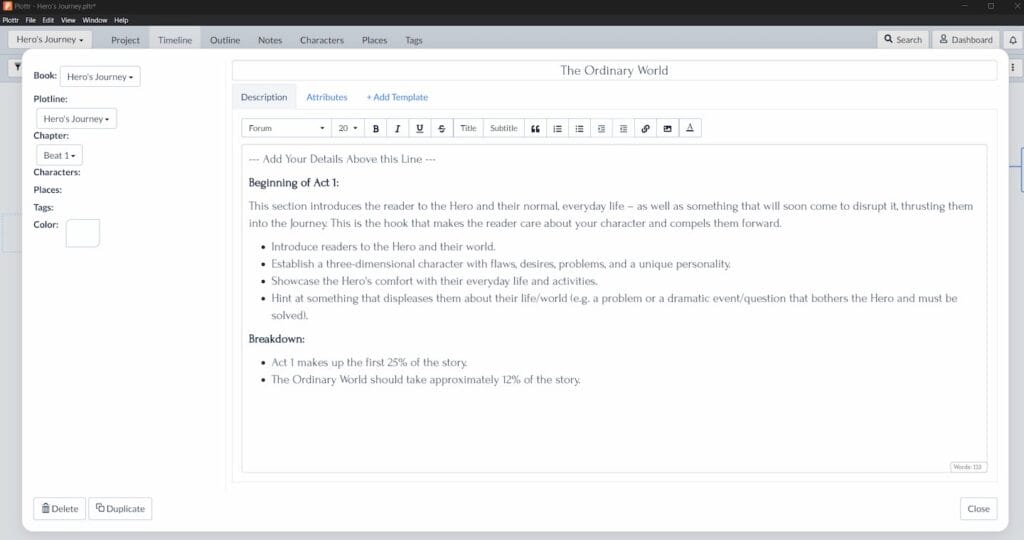
Do you want to see the entire timeline at once? Just select the M, or medium, view. This is a handy feature when you want to view longer plot lines.
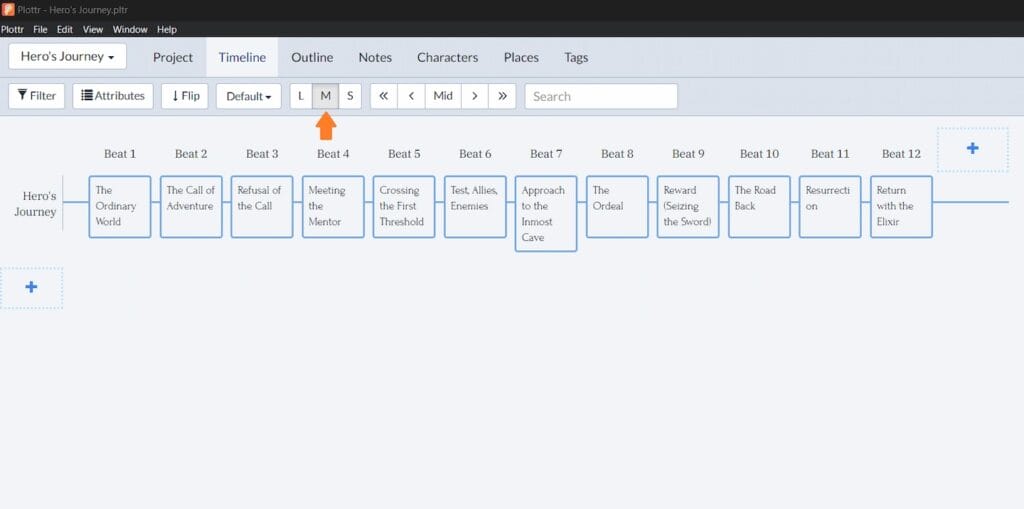
Plot templates in Plottr work well together. For example, you can combine the Hero’s Journey with the Villain’s Journey. Just select Use Template on a new timeline:
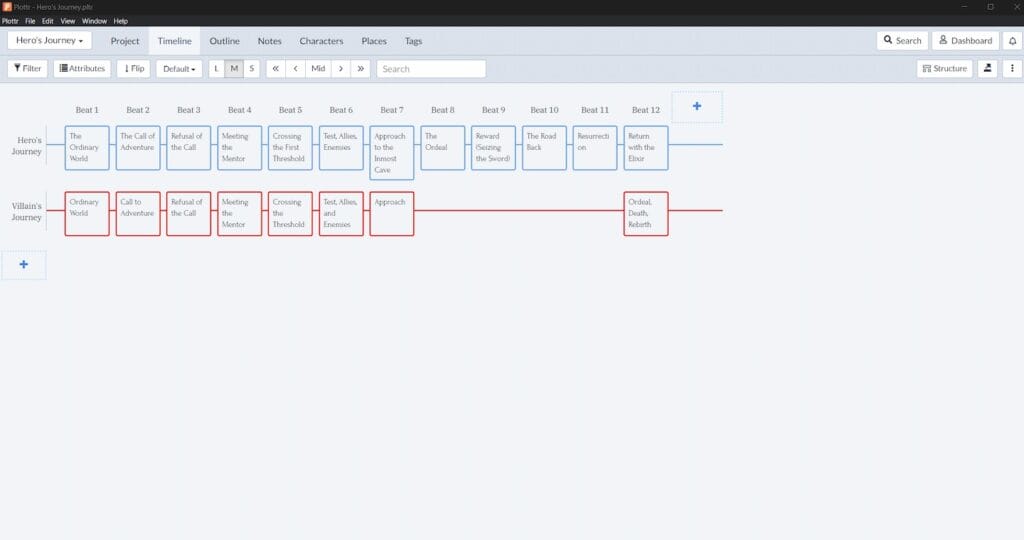
Read more about these templates that go together well with the Hero’s Journey:
Discover Your Hero’s Destiny
Ready to answer the call to adventure? Start now with a free Plottr trial, and let us know in the comments how you’re using this template or others.
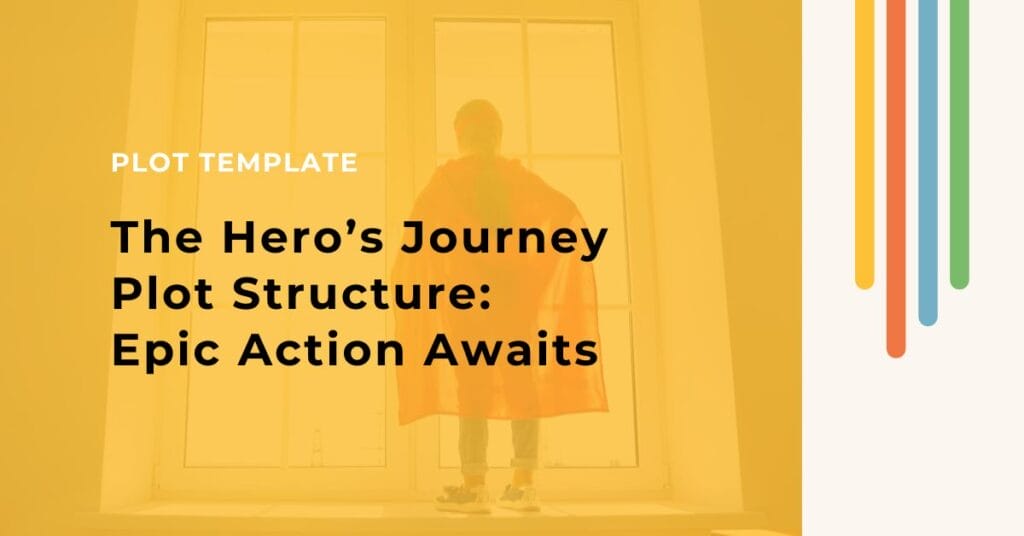
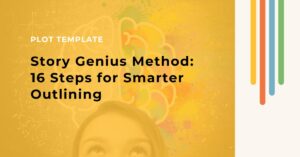
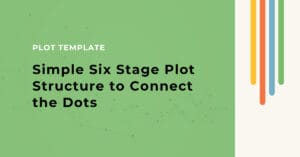
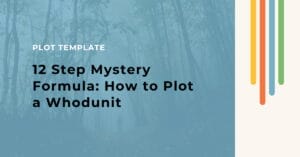




Comments